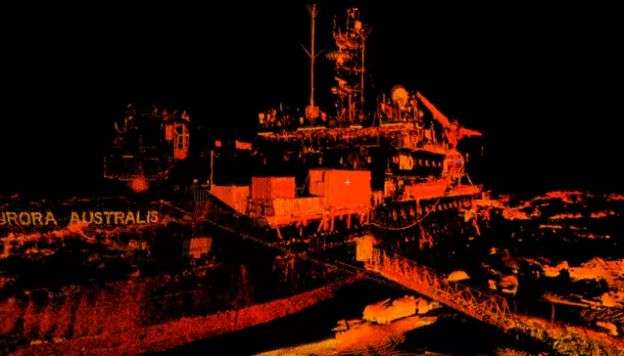Antarctic snowscapes for predicting the weather

EPFL scientists measured for the first time – at centimeter resolutions – how the snowscape of Antarctic ice in the sea changed, before and after a blizzard. This data will help build better weather models for the South Pole and the world's climate.
EPFL scientists provided the first detailed measurements of how a blizzard affects snow cover on an Antarctic ice floe. Their results are published today in the Journal of Geophysical Research.
This data is important for understanding the interaction of the snow and the wind, which affects the dramatic weather around the South Pole and ultimately the world's climate. Every year, sea ice forms and melts along the Antarctic coasts in cycle with the seasons, reaching a maximum surface area in the winter months. This cycle is affected by the snow and wind.
"The complex interaction between the snow, water and ice with the sun affects ice growth and weather systems," says EPFL scientist Michael Lehning of EPFL's CRYOS Laboratory. "These measurements provide valuable data for calculating these weather predictions."
The glistening brilliance of white snow means that it is highly reflective: most of the sunlight is reflected away, contrary to water which tends to absorb sunlight. The snow's reflectivity contributes to low temperatures at its surface. At the same time, the snow acts like a blanket and retains heat in the snow-covered ice.
Using a 3D terrestrial scanner, EPFL scientist Ernesto Trujillo measured at centimeter resolutions the structure of Antarctic snow-cover over a surface of a hundred meters by a hundred meters before and after a storm.
During a storm, new snow is deposited on the surface area, while old snow gets pushed around or is blown away.
Comparing the snow patterns before and after the storm, Trujillo was able to quantify these differences and their implications. He determined that 43% of the snowscape became eroded due to the storm, whereas 27% of the relief was newly deposited snow.
Trujillo also determined that despite changes in surface characteristics, the surface after the storm would still exert a similar resistance to the air as before. Wind gets caught in the ridges and bends of the snow, pushing snow into the open water but also displacing the ice floating around in the sea. Ice floes pushed by the wind towards the North, where it is warmer, tend to melt; ice floes pushed towards the South tend to develop more ice.
Overall, this resistance between the wind and snow is an important component for predicting Antarctic sea ice formation, ultimately affecting the weather and the climate and how it is changing.
Studying the change in snow structure, at small scales, provides a more global understanding of the snow-wind interaction by determining which characteristics are important.
More information: Ernesto Trujillo et al. Changes in Snow Distribution and Surface Topography Following a Snowstorm on Antarctic Sea Ice, Journal of Geophysical Research: Earth Surface (2016). DOI: 10.1002/2016JF003893
Journal information: Journal of Geophysical Research
Provided by Ecole Polytechnique Federale de Lausanne





















